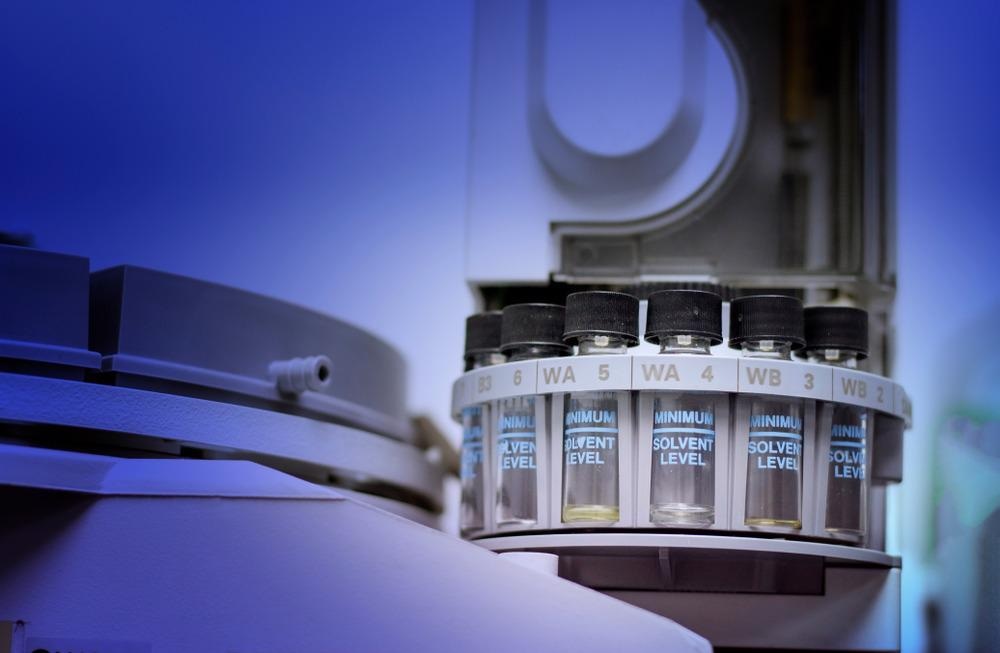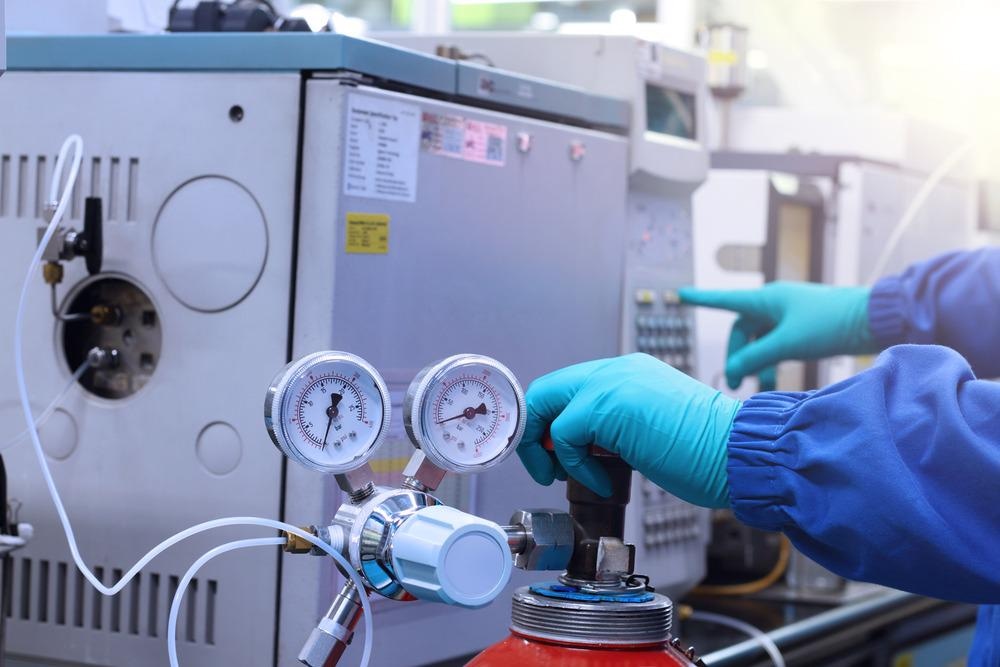Naphthenic acids are a family of compounds that are toxic for both fish and other organisms. They are often found in water in regions affected by oil sands mining.

Image Credit: Ropisme/Shutterstock.com
Depending on the profile of the petroleum deposits in these areas, different constructions of open-pit mines are created to extract the deposits. This often involves draining any water in the pit that can be contaminated with large amounts of naphthenic acids.
While drained water may be stored in tailing ponds to try and prevent environmental contamination, groundwater seepage and spills are still possible.
As well as its high levels of toxicity, water contaminated with naphthenic acids is corrosive and can damage piping and refinery equipment, further increasing the chance of environmental contamination.
Fourier Transform Infrared (FTIR) spectroscopy has previously been used to identify naphthenic acid contamination and quantify levels, but there are some issues with quantification and, despite the cost-efficiency, FTIR spectroscopy is not suitable for forensics.
Gas chromatography-mass spectrometry (GC-MS) instead offers a much more robust and sensitive measurement for the determination of naphthenic acids and their derivatives, though it does require offline sampling.
GC-MS
GC-MS combines the species separation abilities of gas chromatography with the information richness of mass spectrometry detection. The sample of interest is vaporized and loaded onto a column where different chemical species have varying interaction strengths with the column material. The stronger this interaction, the more slowly the compounds are carrier through the column by the carrier gas, and so the longer the retention time.
As each compound, now separated by their varying retention times, reaches the end of the column, they are then ionized and fragmented for detection by the mass spectrometer.
Here, each compound is separated by its mass-to-charge ratio (m/z). The mass of the parent ion - the unfragmented molecule -and the fragmentation profiles can help identify which elements were present in each compound for chemical identification.
GC-MS works well for complex mixtures because, as long as the compounds have sufficiently different retention times, mass spectra can be recorded for each individual chemical species which can help reduce spectral congestion associated with interpreting mass spectra for more complex mixtures.
GC-MS is commonly used for wastewater analysis for the detection of a range of polar and nonpolar contaminants.
Methods for Naphthenic Acids
While GC-MS is an excellent analytical technique for a diverse range of samples, one of the challenges for environmental analysis is developing sample preparation methods for what are often highly complex mixtures.

Image Credit: tanewpix289/Shutterstock.com
Recently, a team of scientists has developed a new series of sample preparation and analysis methods for measuring naphthenic acids that even allows for the identification of several homologous series of acidic oxygenated compounds, including aliphatic and aromatic analytes.
Most traditional GC-MS techniques for the analysis of naphthenic acids from oil sands use a derivatization step to improve the volatility of the naphthenic acid compounds. Most of these have relatively low boiling points in the oil-water emulsion samples collected so can be challenging to vaporize.
Instead, the team trialed many different types of columns for the analysis of the naphthenic acid derivatives and made use of Fourier transform orbital ion trap mass spectrometry using chemical ionization in the negative mode. Altogether, this allowed them to get the chromatographic separation of the compounds for analysis and achieve a very high mass resolution for accurate mass identification.
Methods for Naphthenic Acids
Oil sands samples present a complex mixture of compounds with a range of masses and volatilities. Many of the less volatile compounds also require higher temperatures during the separation which can be problematic as not all column types can handle the higher operating temperatures.
The team found that there was a trade-off between the best performing columns and the polysiloxane-based columns, which proved to be the most informative about the chemical composition.
Columns of the highest hydrogen-bond basicity – or a-value – generally gave better baseline resolution of the acidic species. However, solvation properties also needed to be considered and many of the higher a-value columns also required higher operating temperatures, which limited the range of volatilities that could be studied in a single experiment.
Ultimately, there needed to be a balance between the column inertness, selectivity, and its maximum operating temperature. However, they were able to achieve detection in the range of the low µg / mL using a Trace 1310 gas chromatograph coupled to the Q Exactive HRAM–MS fitted with a FT-orbital ion trap mass analyzer.
The team highlights the need for greater data availability of this family of compounds, given their environmental importance and some of the challenges with their analysis, as their acidity often leads to peak asymmetries. This work shows the need for careful consideration and testing of column conditions for GC-MS, particularly when dealing with challenging sample types.
References and Further Reading
Conrad Environmental Aquatics Technical Advisory Group (CEATAG ) (1998). Naphthenic Acids Background Information Discussion Report, 65 pp.
Ahad, J. M. E., Pakdel, H., Savard, M. M., Calderhead, A. I., Gammon, P. R., Rivera, A., Peru, K. M., & Headley, J. V. (2013). Characterization and quantification of mining-related “naphthenic acids” in groundwater near a major oil sands tailings pond. Environmental Science and Technology, 47(10), 5023–5030. https://doi.org/10.1021/es3051313
Scott, A. C., Young, R. F., & Fedorak, P. M. (2008). Comparison of GC-MS and FTIR methods for quantifying naphthenic acids in water samples. Chemosphere, 73(8), 1258–1264. https://doi.org/10.1016/j.chemosphere.2008.07.024
Crucello, J., Hantao, L. W. and Carvahlto, R. M., (2021). Profiling Free Naphthenic Acids in Produced Water Using Gas Chromatography Coupled to High-Resolution Accurate Mass–Mass Spectrometry (GC–HRAM-MS) , https://www.chromatographyonline.com/view/profiling-free-naphthenic-acids-in-produced-water-using-gas-chromatography-coupled-to-high-resolution-accurate-mass-mass-spectrometry-gc-hram-ms-, accessed October 2021
ThermoFischer (2021) Trace GC Ultra Gas Chromatographs, https://www.azom.com/equipment-details.aspx?EquipID=1072, accessed October 2021
Disclaimer: The views expressed here are those of the author expressed in their private capacity and do not necessarily represent the views of AZoM.com Limited T/A AZoNetwork the owner and operator of this website. This disclaimer forms part of the Terms and conditions of use of this website.